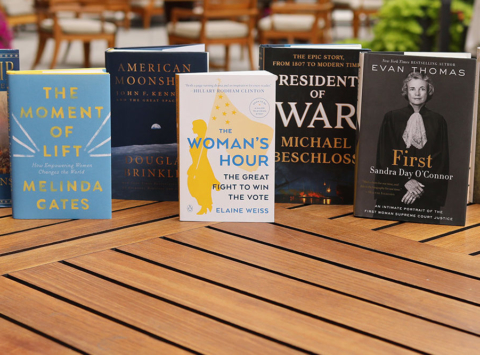In the spirit of learning, one of our staff ordered a Google Cardboard virtual reality (VR) viewer and brought it to a recent staff meeting for us to experience. The story we were watching to test out this new technology was The New York Times’ groundbreaking three-part series on the plight of refugee children, a series that I had previously read about, but had not yet had the chance to view. In “The Displaced,” viewers follow along on the harrowing journey of Chuol, a South Sudanese boy (only two years older than my eldest child).
In my excitement to try out this storytelling tech, I threw my hand up like an enthusiastic fifth grader would. My colleague reached across the conference room table to double check that I was holding the iPhone and VR goggles correctly as I adjusted the headphones and hit play. Immediately I was walking through a room, presumably an intro to the NYT VR series. I looked all around amazed that it really did feel like I was in that room, then the article title came up and I was thrust into Chuol’s story. It felt like I was really there, floating in a roughhewn wooden boat in the middle of a swamp under cloudy skies, and it suddenly hit me that I knew what the surrounding reeds were hiding: women and children in flight from unspeakable atrocities.
My pulse soared, my breath grew instantly shallow, my eyes burned and I began to sob. The virtual reality of Chuol’s actual reality was so vivid that it overwhelmed me. I pulled off the headphones and apologized through tears to my coworkers, some of whom had been trying to capture a fun video to share about our first collective experience with VR. Instead I’m sure they recorded my face unfolding in horror of what I knew lay ahead for that little boy.
It was too close for comfort, but maybe that was the point. My head and my heart were already hooked by the story that had received widespread coverage in the days leading up to this experience and the VR experience sealed it inextricably. I’ll never forget that moment of “seeing” through Chuol’s eyes. Short of a plane ticket and dropping into a conflict zone, the experience could not have been more authentic.
Marketers of all stripes will undoubtedly tap into this possibility of authenticity to attract, engage and retain their target audiences. But my hope is that we will also see VR storytelling as a method to win hearts and minds for good.
The 2013 Millennial Impact Research report found that 70 percent of Millennials are willing to raise money for causes they care about. What better way to capture a broader group of donors than to let them have a virtual experience around a cause? Potential donors could “explore” a pristine marine reserve before it has been destroyed to understand why it matters. “Listening in” on a prognosis meeting for a cancer patient might help articulate the intricacies of fighting that disease. Perhaps hearing a VR testimonial of a client that benefitted from post-incarceration training to land a new job might convey the need to support an effort typically difficult to fund.
Likewise, given the ubiquity of mobile technology around the globe and the exquisite simplicity and lower cost of a cardboard viewer (as one of many VR methods), imagine the possibilities for good beyond donations of money. A business owner in an emerging market could virtually walk the storeroom floor and peer around the globe to get some ideas on how to improve sales rather than examining floor plans; a student could augment their studies of ancient societies by “traipsing” along timeworn streets without needing to afford overseas studies; a homebound person could “climb” treacherous trails to visit impossibly constructed temples on mountain ridges. By using VR, people’s lives could be enriched by having access to knowledge and experience that was previously out of reach.
My incredibly visceral and brief experience with VR was more than enough to convince me of the power of this technology as it begins to enjoy widespread use. I can’t wait to see what the clever do-gooders of the world do next with this medium. Though, next time I strap on a VR viewer I might choose a less heartrending topic.
Interested in using #VR4Good? Share your ideas for this emerging technology with us on Twitter.
Header photo credit: Flickr user Nan Palmero, used via Creative Commons.





